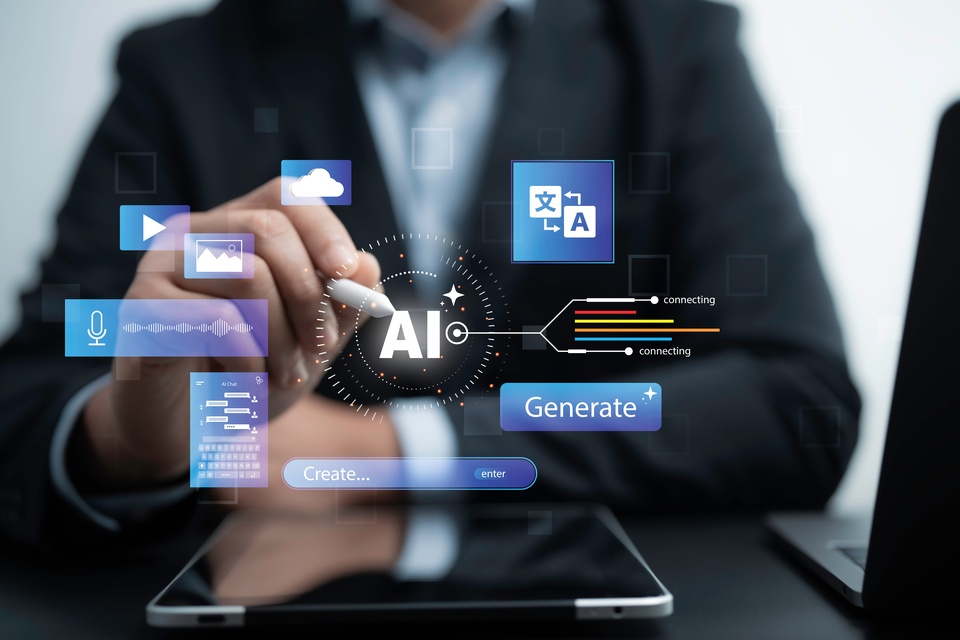Table of Contents
- The Digital Shift In Automotive Dealerships
- Adapting To Changing Customer Expectations
- Integrating Modern Marketing Tools
- Using Data And Personalization For Growth
- Optimizing Online Sales Channels
- Training Dealership Teams For Success
- Measuring Success: Metrics Dealers Can’t Ignore
- Future Trends: Preparing For What’s Next
The Digital Shift In Automotive Dealerships
The influence of technology on automotive dealerships has never been more significant than it is today. As vehicle shoppers increasingly migrate to digital channels for research, pricing, and purchasing, dealerships must keep pace with accelerated technological changes or risk being left behind. Gone are the days when sales teams could rely only on newspaper listings or radio ads to drive traffic to their lots. Digital listings, online showrooms, and instant messaging tools can make or break a sale before a customer arrives. Growing evidence suggests that over 90% of car buyers initiate their journey online and that digital touchpoints often play a decisive role in purchasing decisions. According to a recent analysis by CNBC, digital disruption in the auto industry has made transparency, convenience, and access key factors shaping how people shop for cars. This means dealerships have to think differently about every part of their business.
This transformation’s heart is dealership marketing technology, which combines various digital tools to facilitate a seamless customer journey. Integrating Dealership marketing technology steps up efficiencies, reduces redundancies, and ensures every customer interaction is captured and optimized, from lead generation to post-sale follow-up. Digital-first strategies allow businesses to target in-market buyers and precisely provide personalized experiences at scale. By investing in robust marketing technology, dealerships are simplifying internal processes and making the car-buying process more transparent and engaging for consumers. This is the kind of value that sets them apart from competitors in today’s crowded marketplace.
Adapting To Changing Customer Expectations
Today’s car shoppers arrive at dealerships more informed than ever, having already explored reviews, comparison sites, and pricing tools online. They expect the in-person experience to match the seamless, transparent journey they began at home. Buyers now look for real-time inventory updates, current promotions, and immediate access to vehicle details and financing calculators. Delays or overly complex sales steps are no longer acceptable. To meet these expectations, many forward-thinking dealerships are integrating AI tools for dealerships, enhancing responsiveness and ensuring a smoother, more efficient buying experience.
- Providing live chat and virtual concierge services for immediate responses
- Optimizing mobile websites for fast and easy browsing on any device
- Streamlining appointment bookings for test drives and services through self-service tools
Research shows that nearly 80% of car shoppers will switch to another dealership or brand after a single poor online interaction. This data-driven reality highlights how customer preferences have shifted; seamless blending of digital and in-person services is now the norm. Dealerships that truly listen to and anticipate their customers’ needs—delivering quick support, honest communication, and a friction-free journey—consistently enjoy higher customer satisfaction scores and long-term brand loyalty.
Integrating Modern Marketing Tools
Successful dealership marketing demands more than just visibility; it’s about being in the right place at the right time with the right message. Today’s multi-channel environment means prospective buyers can be reached on search engines, social media platforms, automotive marketplaces, and personalized email campaigns. Modern marketing tools offer deep integration between these channels, enabling teams to track engagement and follow up automatically based on user behavior. Social retargeting, geo-fenced advertising, and predictive lead scoring aren’t just buzzwords—they drive measurable growth across the industry.
Modern Marketing Strategies Dealerships Use:
- Deploying retargeting ads that remind shoppers of vehicles viewed but not yet inquired about
- Designing automated and segmented email campaigns tailored to each shopper’s history and preferences
- Utilizing dynamic web content to personalize browsing experiences for returning users
- Implementing AI-powered chatbots to provide instant, accurate responses at any hour of the day
With many options available, an integrated marketing approach ensures dealerships maximize every potential lead. The result is a more intelligent allocation of marketing dollars and a far more engaging customer experience—all while streamlining staff workflows.
Using Data And Personalization For Growth
In an age where personalization is expected, dealerships must do more than offer generic deals and blanket promotions. By capturing and analyzing data on user behaviors—both online and during in-person visits—dealers can tailor each customer’s recommendations, messages, and offers. For example, a returning buyer might receive early access to new inventory based on their favorite brands, or a service alert precisely timed to past maintenance patterns.
Leveraging data also allows dealerships to foster deeper connections with their community by anticipating customer needs before they’re even expressed. According to Forbes Business Council, employing data-driven personalization techniques can boost engagement by up to 20%. This is good for sales; it’s a proven way to increase customer loyalty, enhance word-of-mouth marketing, and solidify a dealership’s reputation as responsive and attentive.
Benefits Of Personalization:
- Boosted conversion rates from more relevant communication
- Longer-term customer retention and higher satisfaction scores
- A positive online reputation that draws in new business through organic referrals
Optimizing Online Sales Channels
The digital transformation in car retail doesn’t end with marketing—complete online sales journeys are now possible. Virtual showrooms, high-quality video tours, and interactive configurators let buyers experience their favorite models from their homes. Some dealerships even facilitate remote sales, including trade-in appraisals, financing approvals, and home delivery. An omnichannel approach ensures customers can move effortlessly between digital and physical experiences, whether they start online and finish in-store, or vice versa.
- Investing in digital retailing platforms to automate quotes, credit checks, and contracts
- Offering personalized video consultations with sales staff using popular video platforms
- Providing home delivery services for test drives, new purchases, or at-home trade-ins
This expansion of online channels means a broader audience can access your dealership’s offerings without geographic limitations. It also ensures customer accessibility, prioritizing convenience, safety, and a streamlined experience, which are critical competitive advantages in a rapidly evolving marketplace.
Training Dealership Teams For Success
Technology alone cannot transform a business—people remain an essential link between tools and outcomes. To prioritize comprehensive, ongoing training. To fully capitalize on new solutions, it includes educating team members on using CRMs and customer engagement platforms and training in soft skills for digital communication, such as video chat and instant messaging best practices.
Areas To Prioritize In Training:
- Mastery of new digital platforms and in-depth analytics interpretation
- Techniques for building rapport and trust online, not just in person
- Best practices for managing transitions as customers bounce between digital and showroom touchpoints
A dealership culture that values ongoing learning, feedback, and adaptation remains resilient to changing consumer expectations. The most successful retail stories focus on empowered, knowledgeable, and adaptable teams.
Measuring Success: Metrics Dealers Can’t Ignore
In the digital era, measurement is a key driver of differentiation and improvement. Rather than guesswork, today’s dealerships have access to a data universe, letting them identify which tactics are generating absolute returns. Tracking critical metrics such as the sources of website traffic, average lead response times, conversion rates, and post-sale engagement empowers leaders to double down on what’s working and fix what’s not.
- Monitoring traffic origins and top-performing pages to refine marketing efforts
- Analyzing lead-to-sale conversion to identify leaks in the sales funnel
- Tracking response times to ensure no opportunity slips through the cracks
- Evaluating loyalty through repeat business and positive customer feedback
Minor adjustments—like reducing initial response time by just a few hours—often result in measurable close-rate improvements. Consistently reviewing these numbers in an actionable way keeps dealerships one step ahead.
Future Trends: Preparing For What’s Next
While much has changed, the digital journey for car retailers is far from finished. Artificial intelligence, automation, virtual reality experiences, and even broader use of self-service tools are just over the horizon. Nimble dealerships that stay on the cutting edge—by testing new solutions, encouraging a culture of experimentation, and being quick to respond to both success and failure—will shape the future of automotive retail.
The dealerships best positioned for the coming decade will marry the latest technology with a deep commitment to serving real people and their evolving needs, ensuring every innovation translates directly into a better buying and ownership experience.

